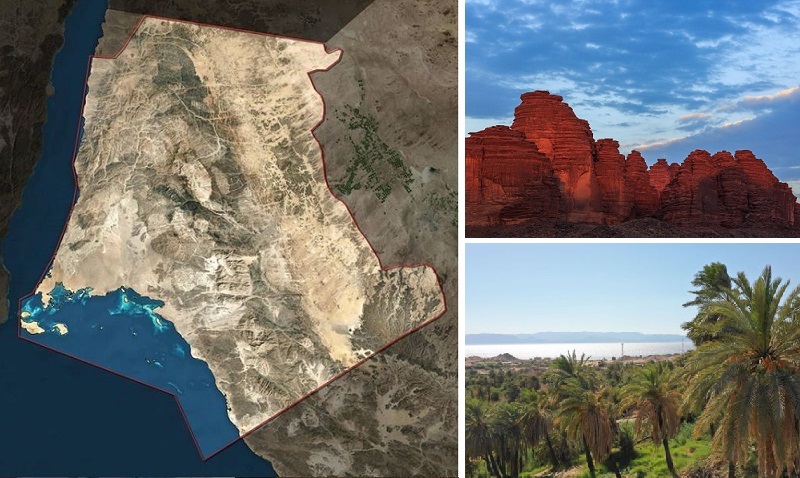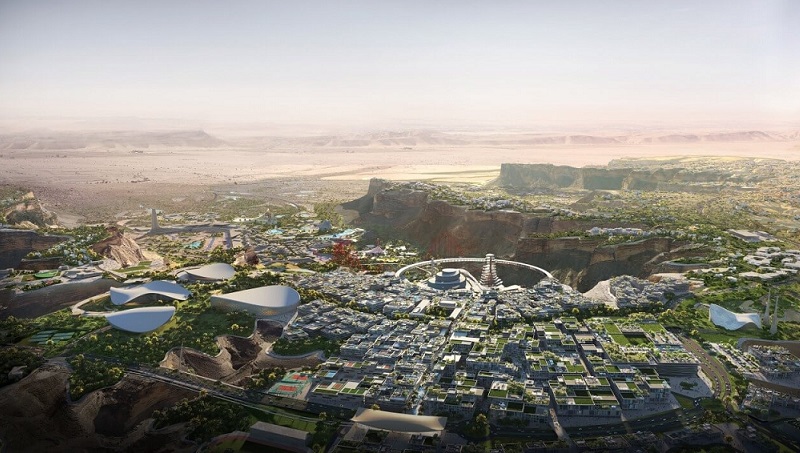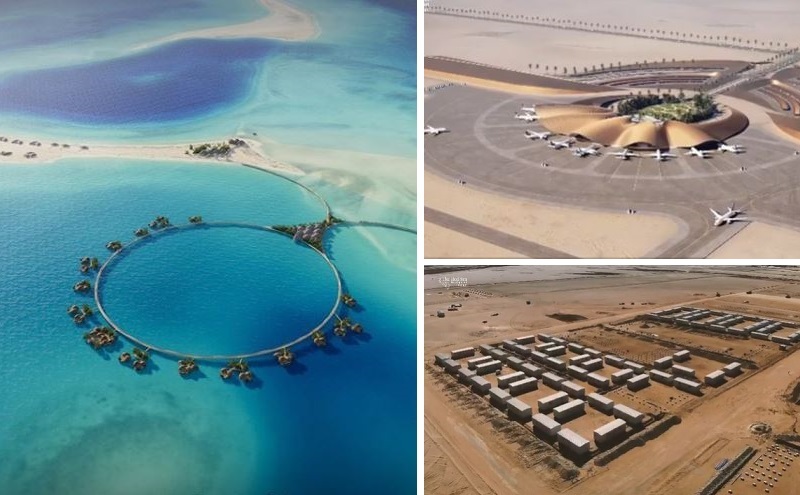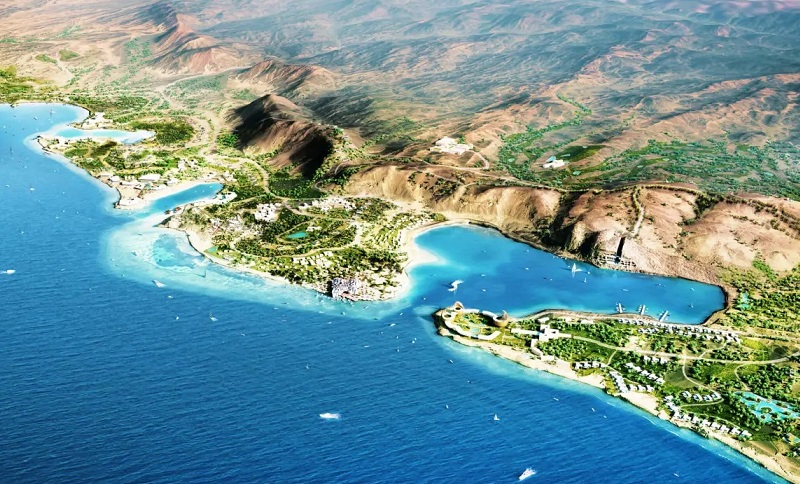Saudi Arabia Launches ‘Giga Projects’ for G20
Saudi Arabia’s latest “giga” projects are coming together as the country prepares to host the G20 leaders’ summit in November.
The four giga projects—Neom, Qiddiya, Red Sea Project and Amaala—are touted as the most ambitious projects on earth utilising technology, sustainability and natural landscapes.
The Middle East is renowned for having big development ideas, although developments including the 1000-metre-high Jeddah Tower are yet to be completed.
Saudi Arabia’s king and prime minister, Salman bin Abdulaziz Al Saud, promoted the projects in the lead-up to the country’s hosting of the G20 summit.
“We in the kingdom are currently undergoing a historic transformation under our Saudi Vision 2030 that aims to foster a vibrant society, a thriving economy and an ambitious nation,” King Salman said at the launch.
“The kingdom will work with the G20 members to exchange experiences, solidify global co-operation and find solutions for the world’s most pressing challenges of the 21st century.”
The biggest challenge in 2020 has been the Covid-19 pandemic which has led to a number of the events being held virtually, ahead of the leaders’ summit in Riyadh.
In response to the pandemic, governments and central banks launched the historic Debt Service Suspension Initiative to provide $14 billion in immediate and critical liquidity relief by bilateral creditors alone for the world’s poorest nations.
High-level ministers discussed these challenges in early July at a virtual conference as well as possible policy responses to help restore sustainable flows of capital and mobilise robust financing for development.
Neom

NEOM—an acronym meaning “a new future”—is being built on the Red Sea in the northwest of Saudi Arabia.
The first section of the 26,500 square kilometre site spans Saudi Arabia, Egypt and Jordan will be completed by 2025.
The Public Investment Fund of Saudi Arabia and international investors are expected to back the project with more than $500 billion.
It includes towns, ports, research zones, entertainment venues and tourist attractions to cater to more than 1 million people.
The project would also be powered by the world’s largest renewable hydrogen facility.
According to the development website, the district would have liveability as its foundation, with industry focused on 16 sectors to pioneer economic prosperity.
“Neom is the most ambitious project on Earth, a bold idea, and a vision of what a new future will look like for humanity,” the 2020 G20 summit website said.
“Neom will leverage our greatest resource—imagination—to create an entirely new blueprint for sustainability and liveability.”
However, about 20,000 members of the Huwaitat tribe “are set to be pushed out to make room for Neom”, according to former regional Human Rights Watch executive director Sarah Leah Whitson.
Qiddiya

The sports, entertainment and culture precinct of Qiddiya, located 40km north of Riyadh, was also announced as one of the Saudi Vision 2030 giga projects.
Construction of the cultural capital began in 2019 in a bid to create opportunities for young people and increase domestic tourism.
Phase one of the project, to be completed by 2023, includes anchor attractions and infrastructure.
The expansion of the precinct in phase two is expected to be completed by 2026 and phase three will continue on until 2031.
Seventy per cent of the 334 square kilometre site was pinned for an eco-zone, while the rest would be divided between resorts, attractions, commercial properties and a “thriving community” of housing units.
“Qiddiya will shape tomorrow’s multi-sector economy, help secure sustainable growth and improve quality of services to citizens,” according to the 2020 G20 Summit website.
“It will also spur investment in the kingdom, particularly in the underserved leisure and entertainment sectors.”
Red Sea Project

The luxury tourism sector in Saudi Arabia will receive a boost from the Red Sea Project across the country’s west coast including 28,000 square kilometres of land and more than 90 natural islands.
The closed joint stock company owned by Saudi Arabia’s sovereign wealth fund is developing the project.
The fund has SAR10 billion in tenderers for the Red Sea Project of which about a quarter have already been awarded.
The masterplan by architecture firm WATG and engineering consulting company Buro Happold includes 3,000 rooms across 14 luxury and hyper-luxury hotels on five of the islands and two inland resorts.
Construction has already started at the worker cabins and by 2030 there will also be a new airport, yacht marina and 8,000 rooms for accommodation.
“The Red Sea Project will set new standards in sustainable development and service excellence,” according to the G20 Summit website.
“The destination’s uniquely diverse landscape includes mountain canyons, dormant volcanoes, a barrier reef, desert vistas and ancient cultural and heritage sites.”
Amaala

The “Riviera of the Middle East”, also led by the Public Investment Fund in partnership with the private sector, will be located on Saudi Arabia’s northwest coast of the Red Sea.
Space for camel racing, falconry, golf, tennis, equestrian and polo events are planned for the 28,000 square kilometre Amaala site, alongside luxury resorts and wellness retreats.
To cater to tourists and residents alike there will be 30 hotels and 835 villas and condominiums.
Construction of Amaala was set to start this year and the entire project completed by 2028, but the Covid-19 pandemic could push the timeline out.
Crown prince Mohammad bin Salman bin Abdulaziz Al Saud said as part of Vision 2030, Amaala and the other projects would reduce Saudi Arabia’s dependence on oil and develop public service sectors such as health, education, infrastructure, recreation and tourism.
“Smart technology will also deliver innovative, tailored services from the moment visitors begin to research their trip, all the way through to their return home, and beyond,” according to the 2020 G20 Summit website.
“The destination will rely on renewable energy 24 hours a day, and will be monitored by a destination-wide system of sensors to track environmental markers in real time.”














